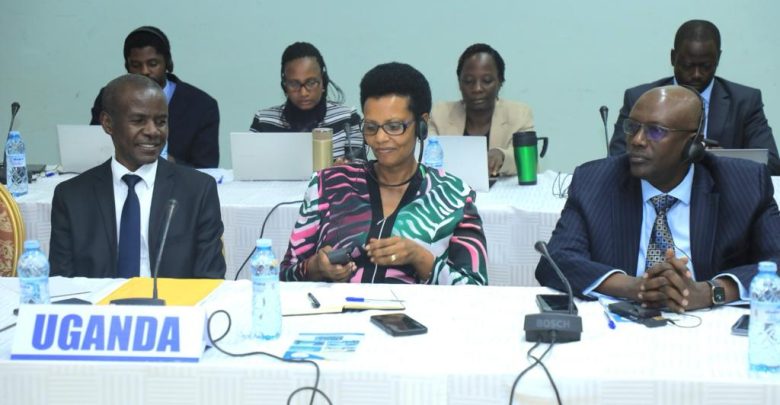
Meetings of the Northern Member States on the development of the Standard Gauge Railway and Regional Road Projects between Uganda, Democratic Republic of Congo, Kenya and South Sudan have opened in Kampala, Uganda.
The Northern Corridor Transit and Transport Agreement (NCTTA) is a multilateral treaty to facilitate transit cargo between the Kenyan Port of Mombasa and the hinterland of Member States namely Burundi, Democratic Republic of Congo, Rwanda, Uganda and South Sudan.
It provides a mechanism for facilitating transit trade to the landlocked countries through the port of Mombasa.
Prior to the treaty, transit trade operated on the basis of bilateral agreements, which did not offer a coherent framework for standardised services and transit trade procedures across the different Member State territories.
The Coordinator of the Northern Corridor Infrastructure Projects, Amb. Richard Kabonero, said investing in infrastructure links within the region is critical to unlocking the region’s economic potential.
He said, “By prioritising the development of roads, railways, waterways, aviation, and ICTs, we can reduce the cost of doing business, increase trade, and stimulate economic growth.”
In 2022, Uganda disengaged with the contractor of the Malaba-Kampala route, China Harbour and Engineering Company (CHEC).
Uganda is now in the process of contracting Yapi Merkezi and engaging financiers from Europe with the view of starting construction of the Malaba-Kampala SGR network before the end of 2023.
The Northern Corridor is multimodal, consisting of road, rail, pipeline, and inland waterways transport, and is recognised as a significant corridor for logistics in East Africa.
During today’s meeting, Ugandan and Kenyan officials held a bilateral meeting on the progress of the SGR.
Kenya has been mobilising financing from China for the construction of the last stretch of the SGR to the border point of Malaba via Kisumu.
Uganda and Kenya intend to harmonise standards, interconnectivity and interoperability of the planned SGR line.
Uganda and Congolese road experts are also expected to discuss the proposed Mbarara-Mpondwe-Kisangani road project.
ChimpReports understands that Uganda and DRC will prepare a Memorandum of Understanding on jointly mobilising funds for the Mbarara —Kisangani road.
The importance of the Northern Corridor is increasing and the current combined transit and trans-shipment traffic through the Corridor has been growing at a rate of 20 percent annually, according to government statistics.
Several obstacles have raised the transport cost within the Corridor, which accounts for about 30 percent of the value of the goods.
These include inadequate infrastructure, poor interconnectivity of transport modes, long delays (stagnation) of cargo at the port and broad post, and lack of goods to transport for the return trip from the inland area to Mombasa port.
These impediments are increasingly being recognised as some of the factors hindering the economic development of the East African Region, particularly the inland areas.
However, in 2022, the EAC admitted the DRC, which is the fourth-largest country in Africa by population (95 million), to the regional economic bloc.
The DRC is one of Uganda’s biggest trading partners in East Africa, with Uganda exporting mainly cement, palm oil, beer, sugar, iron and steel, rice, iron and steel (scrap), cocoa beans and natural rubber.
During 2017, for instance, Uganda exported goods worth $188.98m (Shs685bn) to DRC while imports from DRC to Uganda stood at $156.5m (Shs567bn). This has exponentially grown, with Uganda’s exports to DRC increasing to $338.56m (Shs1.2tn) in 2021.







